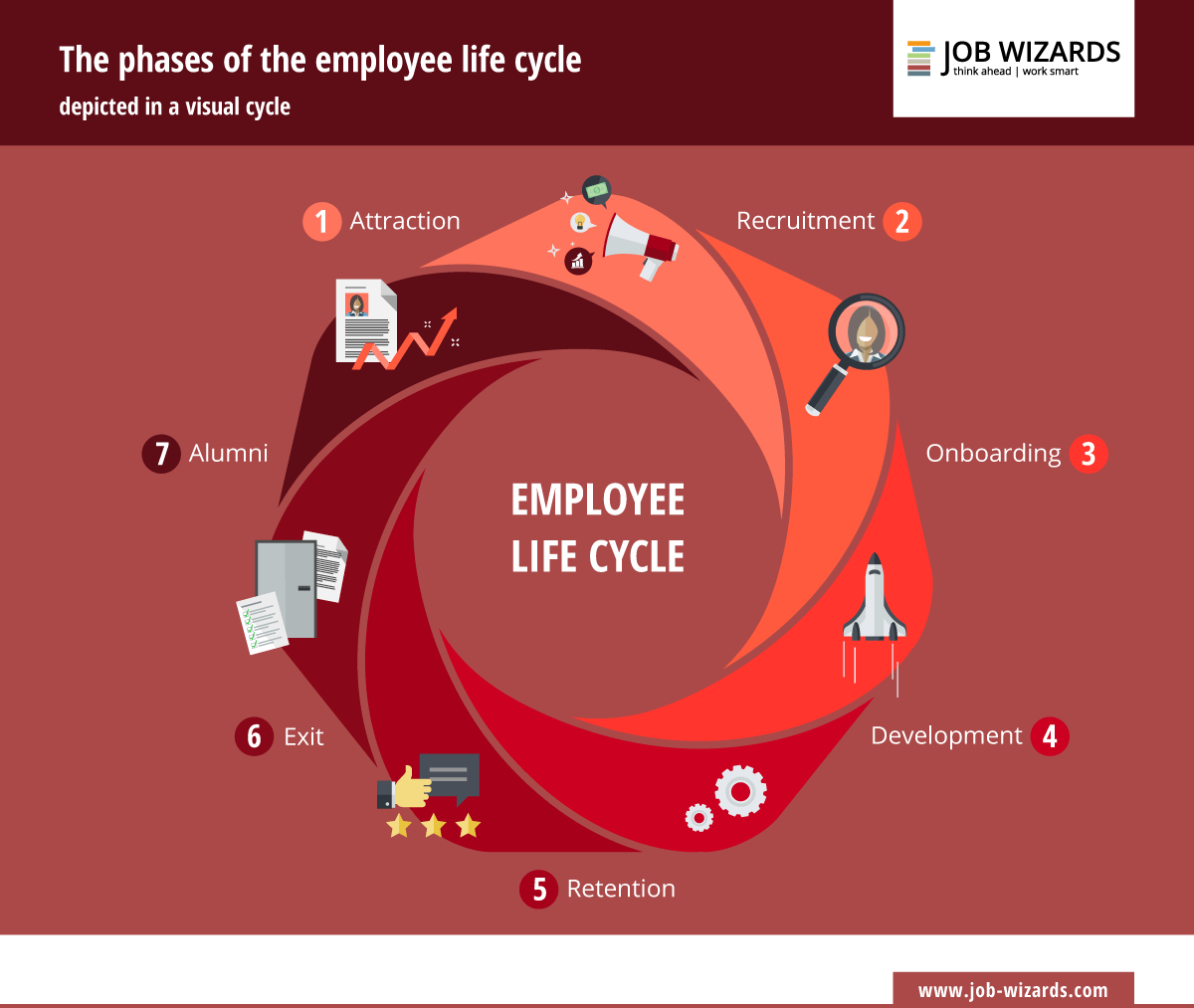In the battle for the best talent, the focus is increasingly turning to employee retention. An analysis of the employee life cycle tells you what employees want and how satisfied they are. This article explains how you can influence the life cycle.
Every second employee in Germany is considering changing jobs to further their career. Employers should prevent such thoughts if they want to retain their valuable human resources for as long as possible. For small and medium-sized enterprises (SMEs), this is a major challenge, because in many SMEs, human resources management (HR) is not yet prepared for the changed requirements of its employees.
Harmony between career and personal life is more important today than in the past. The focus is also increasingly on individual bonuses, exciting projects and career prospects. Finding, hiring and managing employees through to retirement is no longer enough.
Employee life cycle: the new cycle of work
In the past, a career change was only possible as part of an established trajectory. Nowadays, employees are not satisfied with this mapped-out path.
They are looking for career prospects rather than staying in the same position forever. Career progression is not only defined by a promotion. Employees fill vacant positions, take a look at other departments and, ultimately, work in a new area.
A career is no longer a straight line, but rather a cycle. Employees join a company, work, develop, grow with the company and then leave. That is the employee life cycle.
43% of employers are reacting to these needs and have changed their strategy in human resources management. Their most important target is employee retention. To achieve this, HR accompanies all employees through the entire life cycle and supports them in all phases.
The phases of the employee life cycle
The employee life cycle can be compared to a customer journey. All employees go through specific phases. There are five to seven of these, depending on the model.
The seven phases
- Attraction: Offer attractive employer branding with appealing benefits and an impressive reputation.
- Recruitment: Acquire employees with convincing arguments.
- Onboarding: Explain their tasks to the new hire and make them familiar with the company structures.
- Development: Recognise and support the potential and talents of employees.
- Retention: Retain the employees within the company. Ascertain their mood with regular feedback sessions and optimise the workflow so that everyone is and will remain satisfied.
- Exit: Prepare the exit in an organised way and reallocate tasks.
- Alumni: Use and learn from the experiences of former employees.
Employees are looking for recognition and support from the employer at each stage. If you know the phases, you can create positive touchpoints to successfully strengthen employee retention.
Supporting and encouraging employees: your new strategy in HR
The new task of HR is to actively support the employees in your company. With the following measures, you can successfully retain employees within the company:
- Impress them with attractive employer branding.
- Promise benefits in recruitment.
- Confirm the incentives in onboarding. And fulfil them in the additional phases.
- Give your employees space for personal development.
- Create individual career prospects.
- Learn from exits in order to minimise losses in future.
The employee life cycle is a win-win situation for all involved: satisfied, motivated and loyal employees provide the best possible performance. A positive atmosphere and fewer employees leaving improve the reputation of the company and are an ideal reference for future recruitment.




